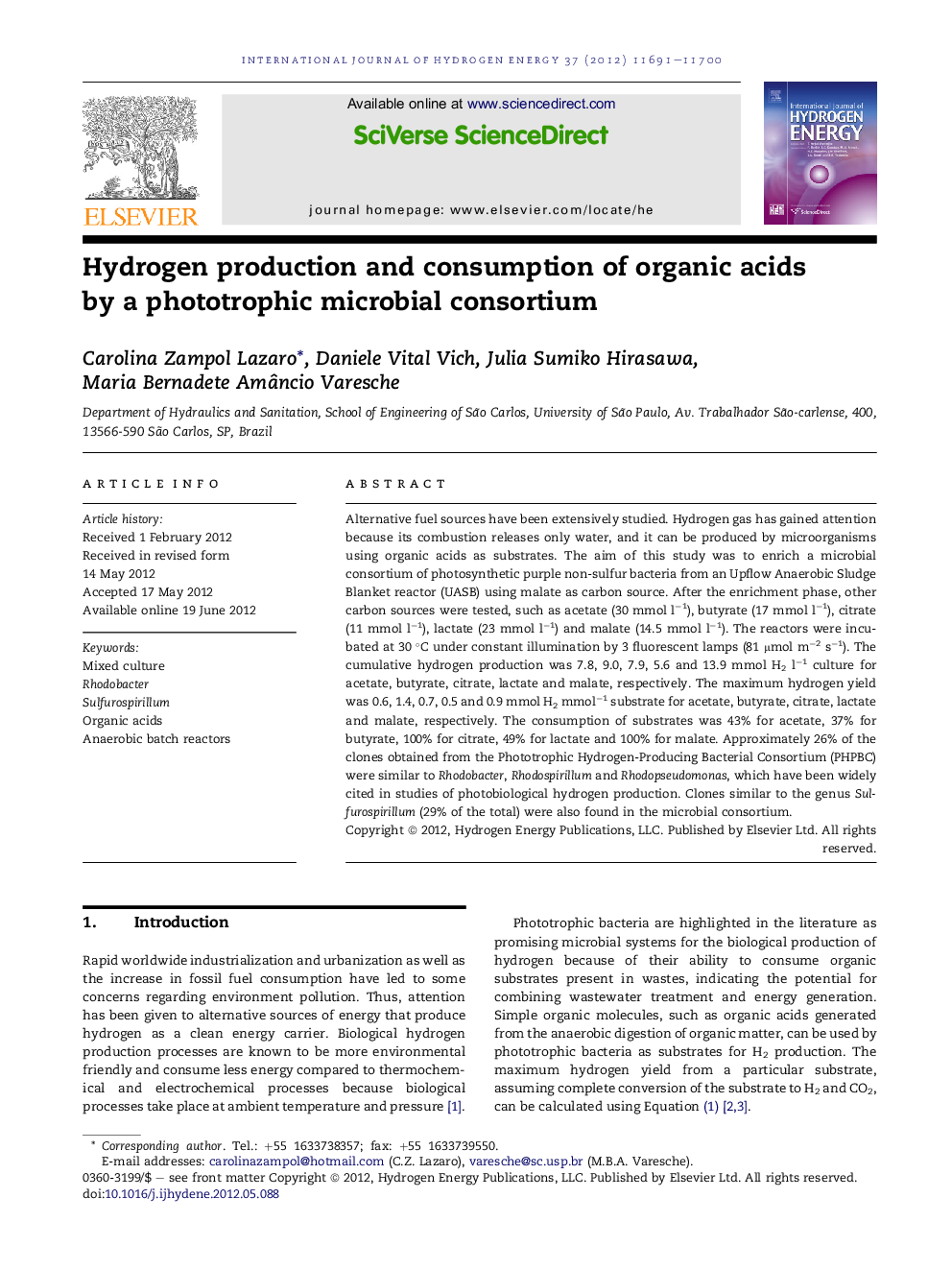| Article ID | Journal | Published Year | Pages | File Type |
|---|---|---|---|---|
| 1275037 | International Journal of Hydrogen Energy | 2012 | 10 Pages |
Alternative fuel sources have been extensively studied. Hydrogen gas has gained attention because its combustion releases only water, and it can be produced by microorganisms using organic acids as substrates. The aim of this study was to enrich a microbial consortium of photosynthetic purple non-sulfur bacteria from an Upflow Anaerobic Sludge Blanket reactor (UASB) using malate as carbon source. After the enrichment phase, other carbon sources were tested, such as acetate (30 mmol l−1), butyrate (17 mmol l−1), citrate (11 mmol l−1), lactate (23 mmol l−1) and malate (14.5 mmol l−1). The reactors were incubated at 30 °C under constant illumination by 3 fluorescent lamps (81 μmol m−2 s−1). The cumulative hydrogen production was 7.8, 9.0, 7.9, 5.6 and 13.9 mmol H2 l−1 culture for acetate, butyrate, citrate, lactate and malate, respectively. The maximum hydrogen yield was 0.6, 1.4, 0.7, 0.5 and 0.9 mmol H2 mmol−1 substrate for acetate, butyrate, citrate, lactate and malate, respectively. The consumption of substrates was 43% for acetate, 37% for butyrate, 100% for citrate, 49% for lactate and 100% for malate. Approximately 26% of the clones obtained from the Phototrophic Hydrogen-Producing Bacterial Consortium (PHPBC) were similar to Rhodobacter, Rhodospirillum and Rhodopseudomonas, which have been widely cited in studies of photobiological hydrogen production. Clones similar to the genus Sulfurospirillum (29% of the total) were also found in the microbial consortium.
► It was possible to enrich a phototrophic bacterial consortium from UASB sludge. ► The microbial consortium consumed organic acids and produced hydrogen. ► The substrate conversion efficiencies ranged from 8% to 15%. ► Most of the clones in the PHPBC were closely related to Alpha, Beta and Epsilonproteobacteria.
